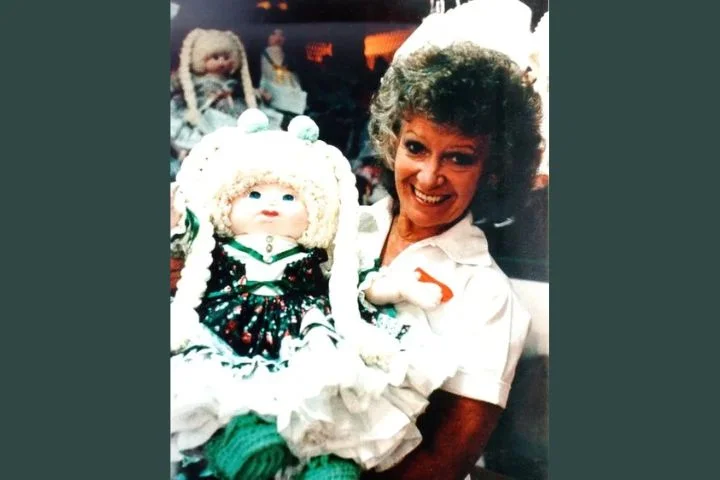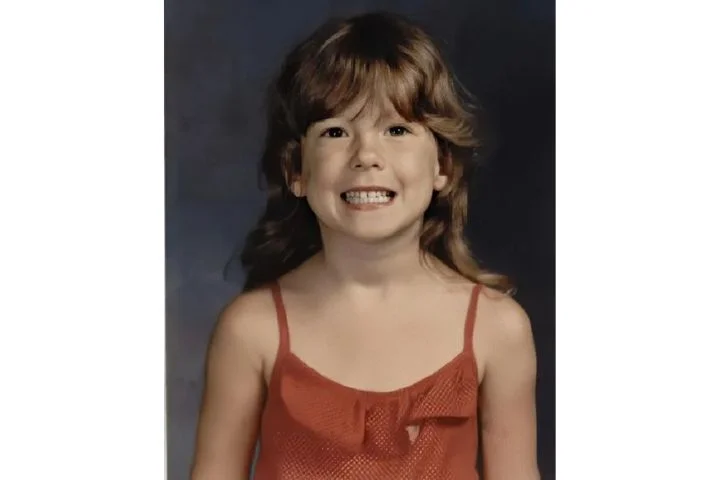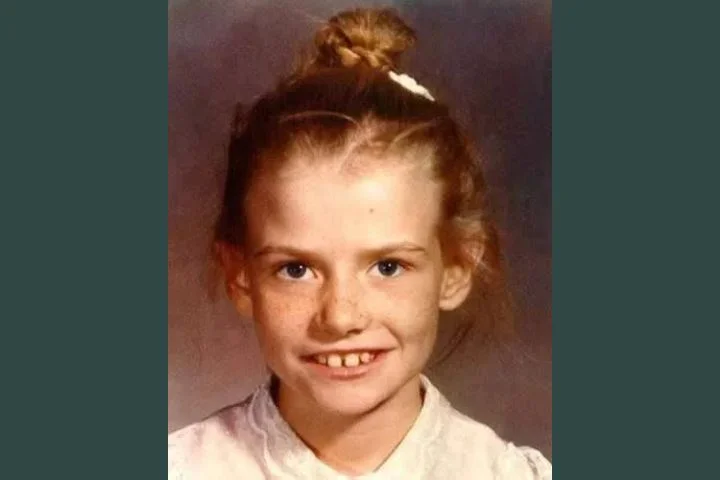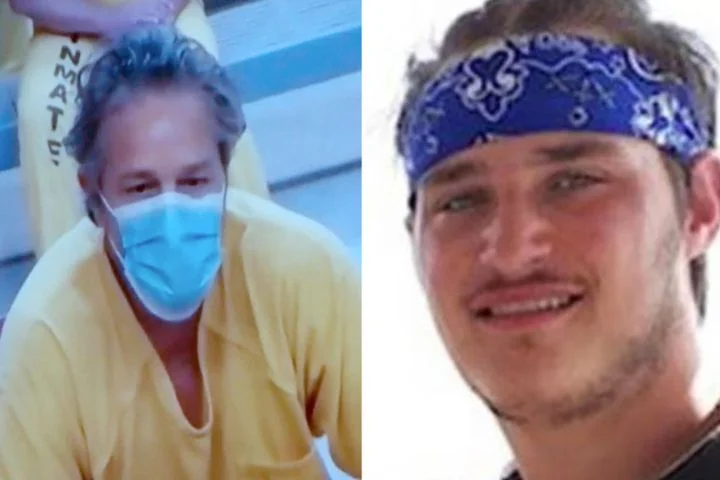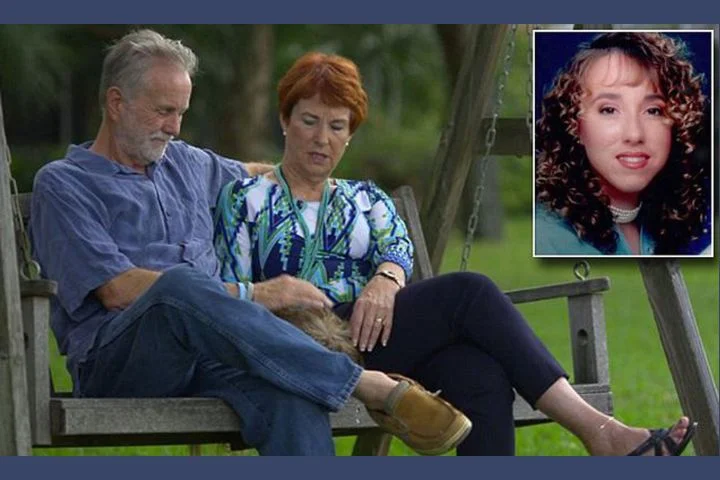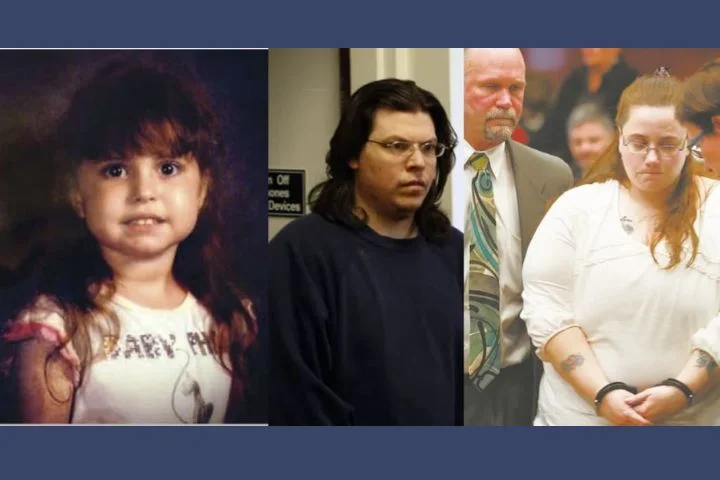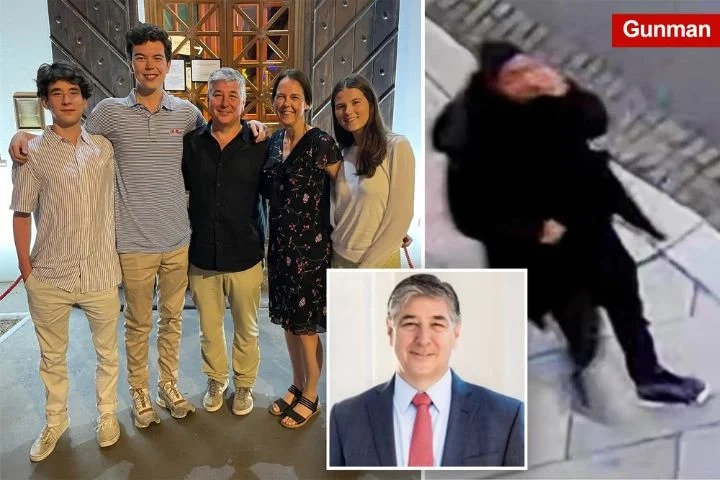Betty Lou Beets was born March 12, 1937, in Roxboro, North Carolina. She was the second child of James and Louise Dunevant. Her father was a tobacco sharecropper, and both he and Betty’s mother were alcoholics. They lived in a shack that had no windowpanes, electricity, or running water. A bout with measles when she was three years old left her with a permanent hearing impairment, and she would later claim that she was forced to teach herself how to read lips. The family moved to Danville, Virginia in 1942 when Betty was five years old. The same year, she claimed that she was raped by her father and several other men.
In 1949, Betty’s mother had to be institutionalized. Betty was 12 years old at the time, and she was forced to drop out of school to take care of her two younger siblings. Her mother eventually recovered enough to return home, but had another psychotic breakdown the following year. Betty was extremely unhappy and viewed marriage as her best option for getting away from home. She married Robert Franklin Branson on July 18, 1952; she was only 15 years old at the time. The following year, she gave birth to her first child, a girl she named Faye.
Betty’s life seemed to fall apart shortly after Faye’s birth. She and her husband separated; not long after the separation 16-year-old Betty was hospitalized after a suicide attempt. The separation only lasted for about six months before Betty and Robert decided to work things out. Betty got pregnant soon after their reconciliation, and she gave birth to their second daughter, Connie, in 1954. Later that year, the family moved to Mesquite, Texas.
While they were living in Texas, Betty gave birth to four more children: Shirley in 1959, Phyllis in 1962, Richard in 1964, and Bobby in 1966. By the time she was 29, Betty was the mother of six children and was feeling extremely restless. Because she had married at such a young age, she felt like she never had the chance to go out and have fun, and she decided to make up for lost time. She began hanging out in bars, flirting with different men and acting like a teenager. She also began experimenting with alcohol for the first time. Her husband was understandably upset, and the couple divorced in 1969 after 18 years of marriage.
Betty would later tell reporters that she had been deeply in love with Robert and had been devastated when he left her. This was probably the truth, as he was the only one of her five husbands that she didn’t try to k*ill. She admitted that she began drinking heavily once he was gone, but blamed it on the stress of suddenly finding herself a single mother at the age of 31. With little schooling and no marketable skills, Betty believed that she needed to have a man in her life to take care of her and was determined to not remain single for long. An attractive woman with a tiny waist and large breasts, she caught the eyes of a lot of men and it didn’t take long for her to hone in on one she thought would take care of her.
She married Billy York Lane on July 28, 1970, but got a restraining order against him a mere four months later and divorced him that November. Despite the divorce, they seemed unable to stay away from each other. In June of 1971, the couple got into a violent fight and Billy broke Betty’s nose. Their feud carried over into the new year, and Billy threatened to k*ill Betty on January 17, 1972. She sho*t him the following day. She was arrested and charged with attempted mu*rder, but Billy signed an affidavit admitting that he had threatened to k*ill her first. The attempted mur*der charges were dropped, though she still faced charges of aggravated a*ssault. Incredibly, she and Billy decided to give their marriage another try. They were married immediately following her trial in 1972, but their reconciliation only lasted for about a month before they got divorced for the second time.
In November of 1973, Betty met Ronnie Threlkold in Dallas, Texas. They dated for more than four years before getting married on February 16, 1978. Like her previous marriage, this one was marred by violence. They had been married for less than a year when Betty tried to run Ronnie over with her car. He declined to press charges but was certainly warier around Betty.
Betty began working as a topless dancer on August 27, 1979. Later that year she was charged with public lewdness and spent 30 days in jail. When asked later about the public lewdness charge, all she would say was that she was in a topless bar but wasn’t topless. Whatever happened, Ronnie had obviously had enough of Betty by this point and they divorced shortly after that. Within weeks, on October 3, 1979, Betty got married to Doyle Wayne Barker. Seven weeks later, they separated, but would continue to have a turbulent, on-and-off relationship until 1981, when Doyle suddenly went missing. Betty told everyone that she and Doyle had a fight, and he had stormed out in disgust. Many were skeptical of this claim, as Doyle left his truck behind and had no other mode of transportation. Betty insisted he left the truck behind so she could sell it.
Eight months after Doyle disappeared, Betty got married yet again. She met Jimmy Don Beets at a bar where she was a waitress and had been immediately attracted to him. He was the same age as Betty but had recently taken an early retirement from his job as a Dallas firefighter. They dated for six months before getting married on August 19, 1982. Jimmy owned a house, but moved into Betty’s trailer with her after they got married. He liked the fact that her property backed up against the lake and provided him with a place to dock his fishing boat. He wouldn’t have a lot of time to enjoy it.
On August 6, 1983, Betty called police and reported Jimmy missing. She said he was at the house earlier in the day and may have gone fishing, but he never returned. Although she didn’t seem to be at all upset, there were no obvious red flags and police took her statement at face value. Jimmy was listed as a missing person but no foul play was suspected. It was a week later that the first indication of trouble was found.
On the evening of August 12, 1983, two men who were fishing on Cedar Lake saw a boat floating near the Redwood Beach Marina. They noticed there was no one on board and it looked like the boat was going to crash into some of the docked boats. Concerned, the men rowed over to it in order to take a closer look. They saw that the boat’s engine had been pulled out of the water and one of its propellers had been sheared off. In the bottom of the boat they found a fishing license, a pair of glasses, and some nitroglycerin tablets that had spilled out of a prescription vial. As soon as they saw the name on the fishing license, they knew something was wrong. Both men knew Jimmy well and had gone fishing with him in the past. He was a skilled mechanic who should have been able to safely pilot the boat to shore even with one propeller missing. He was also an exceptionally strong swimmer, and the boat had a life preserver on board. The presence of nitroglycerin tablets, however, suggested that Jimmy had some kind of heart episode that may have made it impossible for him to swim to the shore. They immediately yelled for someone at the marina to call the police.Jimmy Don Beets (Photo from Findagrave.com)
By dawn the next morning, dozens of Dallas firefighters had arrived at the marina near where Jimmy’s boat had been found. The bond between firefighters is a strong one, and they wanted to make sure they did everything they could to bring their retired member home. There were around 100 boats in the area participating in a bass fishing contest, and when they learned what was going on they all joined in the search effort. Helicopters and small planes offered assistance from above. The Red Cross soon arrived on the scene as well, offering sandwiches and cold drinks to those assisting in the search.
The search effort would last for 13 days before it was reluctantly called off. Privately, some of the searchers wondered if Jimmy was in the lake at all. The water was warm enough that a de*ad body should have floated to the top by now. Even after the official search was called off, Jimmy’s friends and fellow firefighters continued to search on their own and prayed for a miracle. When they learned that Betty wanted to have a memorial service for Jimmy just one week into the search, they were shocked. The entire community was holding on to the hope that Jimmy was still alive, but Betty was ready to memorialize him and move on.
It would be two years before the truth about what happened to Jimmy would become known. A confidential informant called police to tell them that Jimmy’s de*ath had been no accident. Quietly, the Henderson County Sheriff’s Department began looking into the claim. Finally, they had enough to move forward. On June 8, 1985, three days before she was scheduled to collect on Jimmy’s life insurance policies, Betty Lou Beets was arrested and booked into the Henderson County Jail. Once she was safely behind bars, law enforcement executed search warrants on her home and surrounding property. It didn’t take them long to discover what everyone had feared. Jimmy hadn’t drowned, and his body had never been in the lake. Investigators soon found his corpse on Betty’s property, thrown down an ornamental wishing well and covered with moss and flowers. Jimmy had constructed the wishing well himself at Betty’s request; he had no idea he was digging his own grave.
Once they were done digging through the front yard, investigators moved to the back of Betty’s property. There, underneath a storage shed, they found the remains of her fourth husband, Doyle Wayne Barker. Both Jimmy and Doyle had been s*hot to de*ath with a .38 caliber gun; Doyle had been sho*t three times, Jimmy had been sho*t twice. Investigators would later determine that both men had been asleep when they were k*illed, a fact that offered little solace to their grieving families.
After the bodies had been found, two of Betty’s children came forward and revealed some shocking news to the investigators. Betty hadn’t acted completely alone. She had confided in them ahead of time about her m*urderous plans. Her daughter Shirley had assisted Betty in burying Doyle’s body back in October of 1981. Her son, Robert, told detectives that his mother had asked him to leave the property for a while on a hot August evening; she was planning to k*ill Jimmy Don that night. Richard obeyed and stayed away for two or three hours. When he returned, Jimmy was de*ad.
Richard helped his mother conceal Jimmy’s body in the wishing well. The following morning, the two of them decided to make it look as if Jimmy were missing in a boating accident. Richard sheared one of the propellers off the engine while Betty collected Jimmy’s fishing license and nitroglycerine tablets and placed them in the boat. They added a life jacket and a pair of Jimmy’s glasses, then pushed the pilotless craft out onto the lake. All that was left for Betty to do was act like a bereaved widow long enough to collect Jimmy’s d*eath benefits. For two years, she had gotten away with it.
On July 11, 1985, Betty was indicted for the mur*der of Jimmy for remuneration and the promise of remuneration, a capital offense. Prosecutors believed that money had been Betty’s sole motivation for mur*dering Jimmy. He had multiple life insurance policies worth close to $125,000, as well as a $1200 monthly pension from his firefighting job. Betty disputed this, claiming that she didn’t even know any of the policies existed until 18 months after Jimmy was k*illed. She testified that Jimmy’s parents had been the ones to tell her about the insurance; if they hadn’t mentioned it, she never would have known. Denny Burris, a chaplain from the Dallas Fire Department, told a different story. He met with Betty several times in the weeks following Jimmy’s disappearance, and he testified that when he met with her, she had only one question for him. “If they don’t find Jimmy Don, what kind of benefits will I be eligible for?” Burris also testified that Betty was too busy entertaining friends when he attempted to meet with her for the first time, and he had to come back. Her demeanor suggested that she wasn’t upset at all about Jimmy’s disappearance.
Initially, Betty denied any involvement in the de*aths of either man and claimed she had no idea how their bodies had ended up buried in her yard. At a bail reduction hearing held a few days after she was indicted, Betty denied knowledge of any insurance policies on Jimmy Don and insisted that she had not sh*ot him nor hidden his body. Although she was eligible for bail in the Barker case, she was denied bail in the Beets case and was told she would remain in jail until the trial.
From jail, Betty told reporters that she was relieved when she was arrested. She claimed that although she was not the one who had killed either of the men, she did know about their de*aths and had never reported them.
Betty entered a not-guilty plea and was convinced that the jury would believe her side of the story. During her trial, she blamed one of her sons for killing Jimmy and claimed her daughter had been responsible for the de*ath of Barker. She insisted that she never would have hurt Jimmy, as no one had ever been as good to her as he had been. Her current boyfriend, Ray Bone, told jurors he believed she was innocent based on how well she treated him while they were living together. He did admit, however, that she never wanted anybody to mow the lawn.
The jury failed to be swayed by her claims and sided with the prosecution. On October 11, 1985, they found her guilty of capital mur*der. A sentencing hearing followed three days later, and Betty was sentenced to d*eath. The Court of Cr*iminal Appeals reversed her conviction for capital mur*der, stating that mur*der for the purpose of obtaining life insurance or pension benefits did not count as murd*er for remuneration under Texas law and therefore Betty could not be guilty of capital mu*rder. In a 6–3 ruling, the court stated that only mur*der-for-hire cases could be prosecuted as mur*der for remuneration.
It looked as if Betty would escape with her life, but prosecutors requested a rehearing of the case. If the court’s ruling was upheld, it would set an important legal precedent: only a hired k*iller or the person who hired them could be charged with capital mur*der, while someone who ki*lled in order to get life insurance money could not. It was certainly a pertinent issue — in 1984, Texas had executed a man for k*illing his son for insurance money. In 1989, the Court of Cri*minal Appeals reaffirmed the capital mur*der conviction. That August, Betty became the first woman in Texas since 1963 to receive an execution date. The judge set the date as November 8, 1989, telling Betty she would “be taken to a room at some hour before sunrise as provided by law to be injected with a lethal substance or substances as provided by law.” Betty left the hearing without comment, saying only that she would communicate by letter from her prison cell. Her daughter, Faye Lane, told reporters that things felt like they were moving too fast and it made her feel sick. Jimmy’s son James, however, told reporters he was pleased that an execution date had been set and hoped it would help his father rest in peace.
The appeals process lasted for the next decade. Betty’s supporters insisted that Betty was driven to kill by years of domestic abuse, despite Betty’s own testimony that Jimmy treated her well. Betty now claimed that if the jury had known she was a battered wife, she never would have received the de*ath penalty. She found support from members of the Texas Council on Family Violence. One member, Bree Buchanan, believed Betty had been suffering from battered woman syndrome and post-traumatic stress disorder. Betty had never tried to use this as a defense when she was on trial, but she blamed her lawyer for not bringing it up.
There is little doubt that Betty survived a horrible childhood, and some of her abuse allegations are likely true. But the once helpless child matured into a woman who wasn’t afraid to stand up for herself. She claimed that she had been abused in all of her marriages, yet there is no proof of that. If anything, she seemed to be the aggressor on several occasions. She sh*ot her second husband and only escaped being charged with attempted mu*rder because he refused to go along with it. She tried to run her third husband over with her car, but again escaped jail time because he didn’t press charges. She was only married to her fourth husband for seven weeks before she m*urdered him, and her fifth husband didn’t fare much better. There is nothing to indicate that either of these men were physically violent with Betty, which is probably why all of the courts affirmed Betty’s de*ath sentence, and Governor George Bush refused to grant clemency. Her claim of k*illing in self-defense was also disputed by her own son’s testimony. He told the court Betty demanded he leave the property for a few hours because she was planning on ki*lling Jimmy. Betty, in turn, tried to place the blame on her son, saying that he was the one who had murd*ered Jimmy.
Betty’s daughter, Faye, believed that her mother’s life should be spared. But Betty’s daughter Shirley had testified against her mother at her trial, telling the jury that her mother had told her of her plans to k*ill Jimmy and make it look like an accident. She also admitted that she had helped her mother bury the body of Doyle Barker; she testified that Betty k*illed Doyle because she didn’t want to put up with any more abuse from him, but she couldn’t divorce him because the trailer they were living in was in his name. Shirley said Betty waited until Doyle was asleep before grabbing a gun and shooting the sleeping man several times in the head; this could hardly be called self-defense.
Another problem with Betty’s late attempt at using a battered woman defense was the fact that she never confessed to mu*rdering her husband. She insisted that she had no idea what had happened to Jimmy and swore she didn’t know he was buried in her wishing well. Of course, at the time she went to trial battered women’s syndrome was not a widely recognized defense. It wouldn’t take hold until close to a decade after she was convicted, and there were some women who later had their sentences reduced or even commuted at a later date. It’s unclear if Betty could have been one of them had she admitted that she was the one who pulled the trigger. By insisting she had nothing to do with the mu*rder, she locked herself out of using any type of mitigating defense. Two days before her execution date, the Texas Board of Paroles and Pardons refused to grant a reprieve or commute her sentence. The chairman of the board declared, “Beets had never confessed or showed remorse for her actions and did not show enough evidence that domestic violence caused her to commit the c*rime.”
Governor Bush, who was in the middle of his campaign for President, also rejected Betty’s claims and refused to grant a stay of execution. In the days leading up to Betty’s execution, Bush was flooded with calls and letters from 2108 people who opposed Betty’s execution, and only 57 from people who thought she should be executed. Bush refused to give in to popular opinion, stating that he believed Betty was indeed guilty, and he had faith that the judicial system had thoroughly reviewed her case before upholding her d*eath sentence.
On February 24, 2000, Betty was executed by lethal injection. She declined a final meal and said that she had no last words. She refused to make eye contact with the people who were there to witness her execution, though she did smile at her family members who were standing off to the side. At the time of her execution, she had five living children, nine grandchildren, and six great-grandchildren; she said she hoped they would remember her as a “loving family matriarch.” She also said she was extremely sorry for the pain suffered by her victims’ family members, though she still insisted she was not the one responsible for causing their pain.
James Don Beets, who witnessed the execution of his father’s ki*ller, admitted that he wasn’t a big supporter of the d*eath penalty and there was nothing that would bring his father back to life. However, he felt that justice was served in this case, and remarked that if Betty had truly felt that she was being abused — something he didn’t believe was ever true — all she had to do was leave. She didn’t have to go and shoot his father to de*ath in his sleep. He also decried the fact that it was Betty who continued to make the news — his father had been all but forgotten.
Betty had been scared about the thought of being strapped down on the gurney, but she managed to remain composed. The process only took about 10 minutes, and Betty was pronounced d*ead at 6:18pm. She would have turned 63 years old two weeks later, making her the oldest inmate executed by the state of Texas since 1982.
